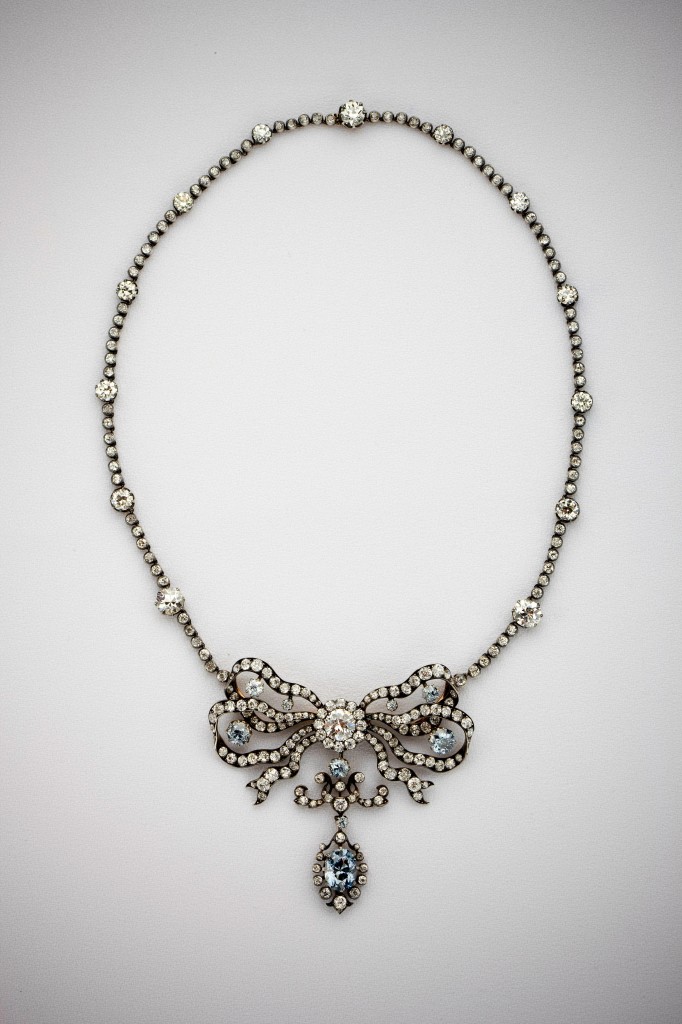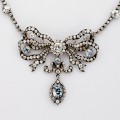The Smithsonian’s National Museum of Natural History recently acquired four remarkable gemstones and jewelry pieces for the Smithsonian’s National Gem Collection in celebration of the 100th anniversary of the museum.
Among the donated pieces was the Cullinan Blue Diamond Necklace featuring a bow motif with nine sparkling and extremely rare blue diamonds. In addition to the necklace’s 5.32 carats of blue diamonds, 251 other diamonds were used to craft this exquisite piece of work.

The Cullinan Blue Diamond Necklace features a bow motif with nine sparkling and extremely rare blue diamonds.
“Since the museum first opened its doors to the public in 1910, gifts such as these have helped the National Gem Collection become one of the largest and most important of its kind,” said Jeffrey Post, curator of the National Gem Collection.
The Tourmaline Triplets are a rare example of tricolor elbaite tourmalines. At 60.13, 75.25 and 90.03 carats, they total approximately 225 carats. The multihued stones are nearly identical and all feature an elongated octagonal step cut. The distinctive color zoning results from different impurity atoms that were incorporated into the growing crystal, and in the case of the triplets, transitions from a vivid deep green to yellow and orange-red.

The Tourmaline Triplets are a rare example of extremely fine, well-matched, tricolor elbaite tourmalines. At 60.13, 75.25 and 90.03 carats, they total approximately 225 carats.
Created in 2009 by Cindy Chao to commemorate her metamorphosis from a jewelry designer to a jewelry artist, the Royal Butterfly brooch is a three-dimensional objet d’art set with 2,318 gems totaling a near 77 carats. One of the most intriguing design characteristics is the use of four large rough diamond slices atop a layer of faceted diamonds, forming the centers of the wings. The sapphires, rubies, various colored diamonds and tsavorite garnets give the butterfly brooch its vibrant color.
The 17.08 carat Whitney Alexandrite is renowned for its dramatic color change from purplish-red under incandescent light to bluish-green in daylight or fluorescent light. With its exceptional size, clarity, and amazing color change, this gem is one of the finest known alexandrites from the Hematita Mine in Minas Gerais, Brazil.

Created in 2009 by Cindy Chao the Royal Butterfly Brooch is a three-dimentional objet d’art set with 2,318 gems totaling near 77 carats. (Photos by Chip Clark)
“These four new pieces will further enhance the beauty and scientific stature of the collection, and provide an enduring legacy for future generations of museum visitors.”–Jessica Porter





